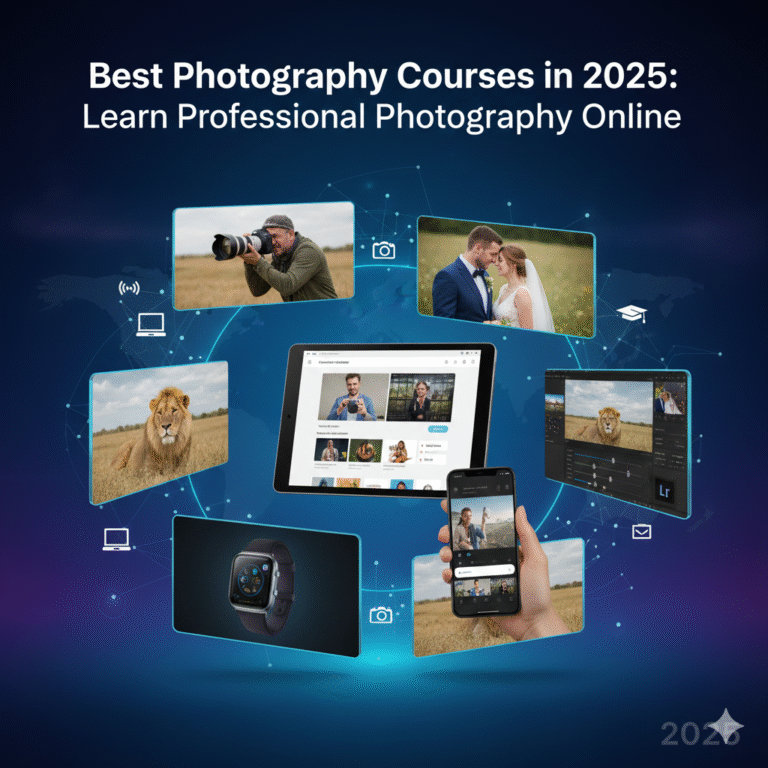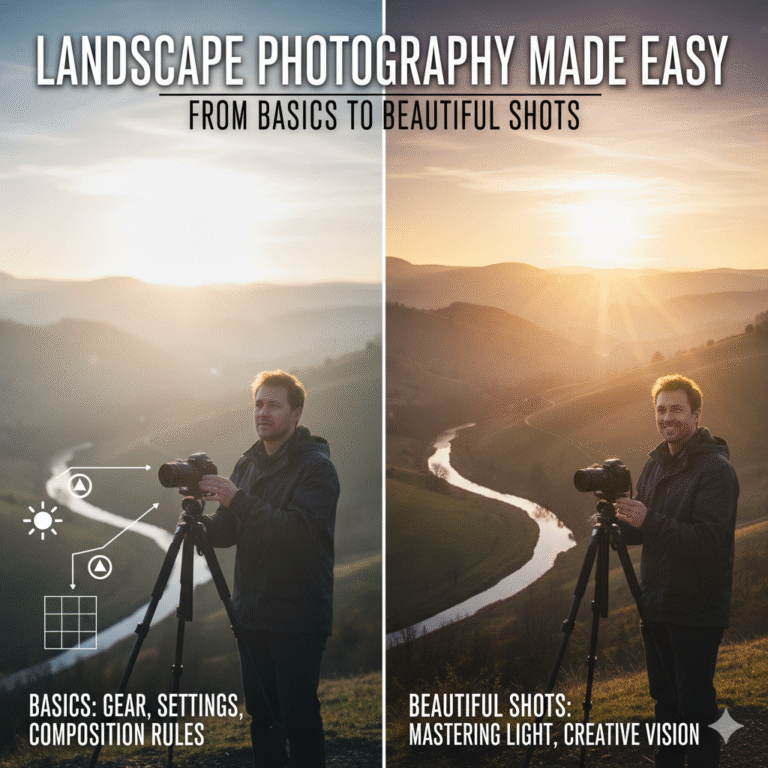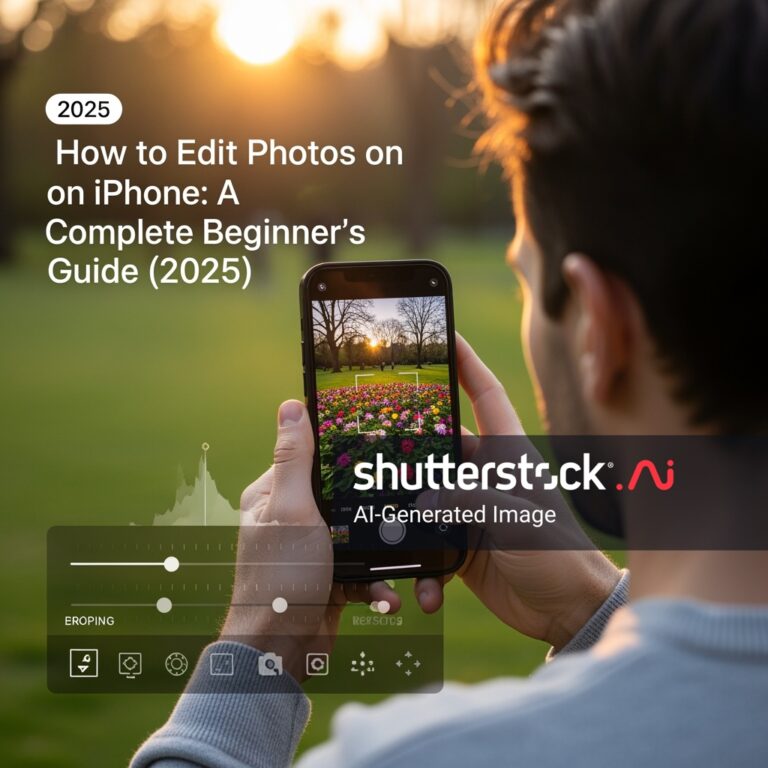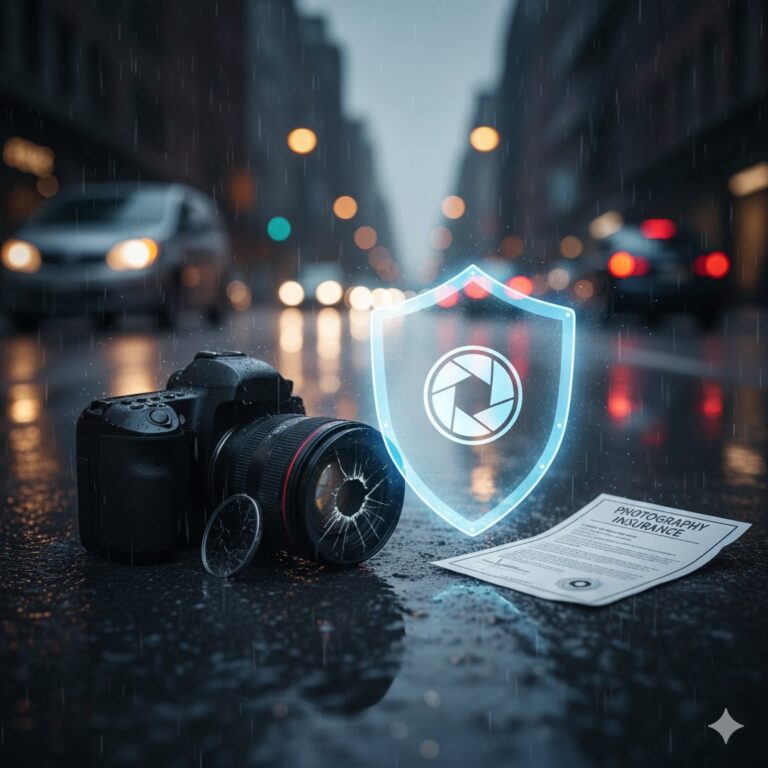Overview: The Significance of Photography in Daily Life
Pressing a button is only one aspect of photography; other aspects include preserving memories, expressing feelings, and telling stories. Learning the craft of photography enables you to produce images that are more powerful than words, regardless of whether you’re using a professional camera or your smartphone. Learning photography may seem challenging to novices, but with the correct direction, it can be an enjoyable and creative experience.
Knowing the Fundamentals of Photography
Beginners should grasp the fundamentals before attempting more complex methods. DSLRs, mirrorless cameras, and even smartphones are among the various kinds of cameras. Every gadget has advantages, but mastering their use is crucial. The cornerstone of good photography is understanding how to modify fundamental settings like focus, zoom, and modes (night, landscape, and portrait).
Understanding the Triangle of Exposure
The exposure triangle is made up of three settings that regulate the amount of light that enters the camera: ISO, shutter speed, and aperture.
- Aperture (f-stop): Regulates the lens’s opening width. For portraits, a wider aperture (small f-number, such as f/1.8) blurs the background.
- The shutter speed controls how quickly motion is captured by the camera. While a slow shutter (1/10 sec) produces motion blur, a fast shutter (1/1000 sec) freezes action.
- ISO: Modifies the sensitivity to light. While higher ISO brightens dark scenes but may introduce noise, lower ISO produces cleaner images.
Beginners can take crisp, well-lit pictures in any setting by learning to balance these three factors.

Composition Methods All Novices Need to Understand
Sharpness is only one aspect of a great photograph; composition is also important.
Framing & Perspective: To produce original compositions, play around with windows, angles, and objects.
Rule of Thirds: Use a 3-by-3 grid to visualise your photo divided into nine equal sections. For balanced shots, position your subject at intersections or along lines.
Leading Lines: To direct the viewer’s attention to the subject, use natural lines like roads, bridges, and rivers.
Post-Processing: Expertly Improving Photographs
Great photos are created through editing. Images can be significantly enhanced with simple changes like cropping, brightness, contrast, and saturation. While professional software like Adobe Lightroom or Photoshop offers more sophisticated features, free tools like Snapseed, Lightroom Mobile, or Canva are ideal for novices. Enhancing photos naturally rather than over-editing them is the key.
Crucial Equipment for Novices (Without Going Over Budget)
To begin taking pictures, you don’t need the priciest camera. Excellent results can be obtained with a mirrorless camera, DSLR, or even a contemporary smartphone. Additional memory cards and a dependable editing programme are essential, and a strong tripod aids in stability. Rather than purchasing expensive equipment, beginners should invest gradually and concentrate more on learning techniques.
Post-Processing: Expertly Improving Photographs
Great photos are created through editing. Images can be significantly enhanced with simple changes like cropping, brightness, contrast, and saturation. While professional software like Adobe Lightroom or Photoshop offers more sophisticated features, free tools like Snapseed, Lightroom Mobile, or Canva are ideal for novices. Enhancing photos naturally rather than over-editing them is the key.
Useful Advice to Develop Your Photographic Ability
- Practise Every Day: Shooting for even ten minutes helps you get better.
- Try a variety of subjects, camera settings, and angles.
- Learn from Mistakes: Examine images to determine what succeeded and what failed.
- Participate in Photography Communities: Websites such as Facebook groups, Flickr, and Instagram offer learning opportunities, inspiration, and feedback.
Patience is key in photography; with regular practice, your images will get better.
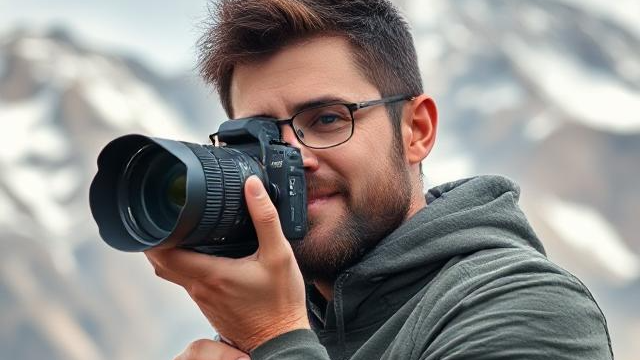
Conclusion: Creating a Loved Art Out of Photography
Photography is an art as well as a science. Beginners can quickly go from taking amateurish photos to ones that look professional if they start small, practise frequently, and learn the fundamentals. Keep in mind that having the correct vision is more important than having the best camera. You can make photography a joyful and meaningful lifelong art form with imagination, practice, and enthusiasm.

